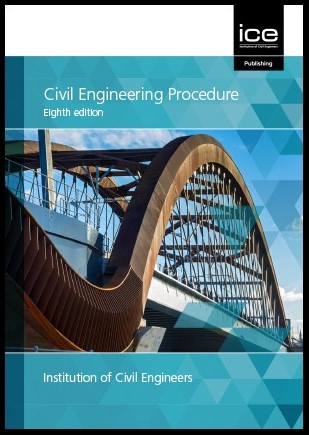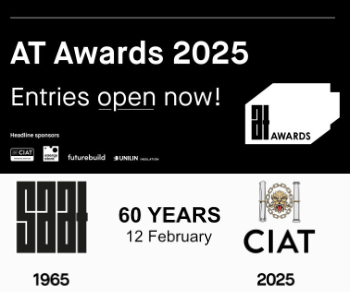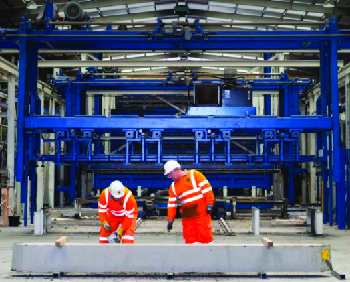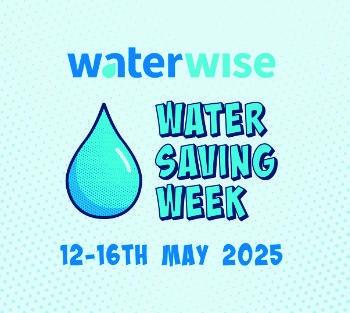Civil Engineering Procedure
The Institution of Civil Engineers (ICE) is a charity and international membership organisation established to ‘...foster and promote the art and science of civil engineering’
Civil Engineering Procedure was first published by ICE in 1963, providing a guide to the stages of work for civil engineering projects such as the design and construction of bridges, tunnels, roads, railways and so on.
The sixth edition was published in 2009 and included updates describing the principles of Public Private Partnership (PPP) and Private Finance Initiative (PFI) projects as well as the emergence of Early Contractor Involvement (ECI).
The seventh edition was published in 2015/16, and included amendments to reflect the introduction of the 2015 CDM Regulations, the NEC3 contract and building information modelling (BIM). It also emphasised the role of civil engineers in building sustainable economies.
The eighth edition, published in October 2020, contains updates including coverage of recent initiatives to improve project and programme delivery, the latest updates to the NEC contracts, and additional case studies that provide insights into real-world practice.
It is a relatively compact book of just 208 pages, which introduce, describe and explain the stages of work for civil engineering projects from concept and promotion through to completion and operation. It is an essential reference guide for students of civil engineering and related disciplines and graduate engineers.
Its contents include:
- Concept and promotion.
- Feasibility studies.
- Procurement and contract strategy.
- Design and Building Information Modelling (BIM).
- Risk management and health, safety and welfare.
- Planning and control of construction.
- Construction management organisation.
- Testing, commissioning and handover.
- Operation, maintenance and asset management.
--The Institution of Civil Engineers
[edit] Related articles on Designing Buildings Wiki
- Civil engineer.
- Construction industry institutes and associations.
- Consultants.
- Direct employment.
- Direct labour.
- Engineer.
- Engineering Council.
- History of the Institution of Civil Engineers.
- Infrastructure.
- Institute of Engineering and Technology.
- Institution of Civil Engineers ICE
- Institution of Structural Engineers.
- Structural engineer.
Featured articles and news
C20 Society; Buildings at Risk List 2025
10 more buildings published with updates on the past decade of buildings featured.
Boiler Upgrade Scheme and certifications consultation
Summary of government consultation, closing 11 June 2025.
Deputy editor of AT, Tim Fraser, discusses the newly formed society with its current chair, Chris Halligan MCIAT.
Barratt Lo-E passivhaus standard homes planned enmasse
With an initial 728 Lo-E homes across two sites and many more planned for the future.
Government urged to uphold Warm Homes commitment
ECA and industry bodies write to Government concerning its 13.2 billion Warm Homes manifesto commitment.
From project managers to rising stars, sustainability pioneers and more.
Places of Worship in Britain and Ireland, 1929-1990. Book review.
The emancipation of women in art.
Call for independent National Grenfell oversight mechanism
MHCLG share findings of Building Safety Inquiry in letter to Secretary of State and Minister for Building Safety.
The Architectural Technology Awards
AT Awards now open for this the sixth decade of CIAT.
50th Golden anniversary ECA Edmundson awards
Deadline for submissions Friday 30 May 2025.
The benefits of precast, off-site foundation systems
Top ten benefits of this notable innovation.
Encouraging individuals to take action saving water at home, work, and in their communities.
Takes a community to support mental health and wellbeing
The why of becoming a Mental Health Instructor explained.
Mental health awareness week 13-18 May
The theme is communities, they can provide a sense of belonging, safety, support in hard times, and a sense purpose.
Mental health support on the rise but workers still struggling
CIOB Understanding Mental Health in the Built Environment 2025 shows.
Design and construction material libraries
Material, sample, product or detail libraries a key component of any architectural design practice.

























